- About MAA
- Membership
- MAA Publications
- Periodicals
- Blogs
- MAA Book Series
- MAA Press (an imprint of the AMS)
- MAA Notes
- MAA Reviews
- Mathematical Communication
- Information for Libraries
- Author Resources
- Advertise with MAA
- Meetings
- Competitions
- Programs
- Communities
- MAA Sections
- SIGMAA
- MAA Connect
- Students
- MAA Awards
- Awards Booklets
- Writing Awards
- Teaching Awards
- Service Awards
- Research Awards
- Lecture Awards
- Putnam Competition Individual and Team Winners
- D. E. Shaw Group AMC 8 Awards & Certificates
- Maryam Mirzakhani AMC 10 A Awards & Certificates
- Two Sigma AMC 10 B Awards & Certificates
- Jane Street AMC 12 A Awards & Certificates
- Akamai AMC 12 B Awards & Certificates
- High School Teachers
- News
You are here
Who's That Mathematician? Paul R. Halmos Collection - Page 16
For more information about Paul R. Halmos (1916-2006) and about the Paul R. Halmos Photograph Collection, please see the introduction to this article on page 1. A new page featuring six photographs will be posted at the start of each week during 2012.
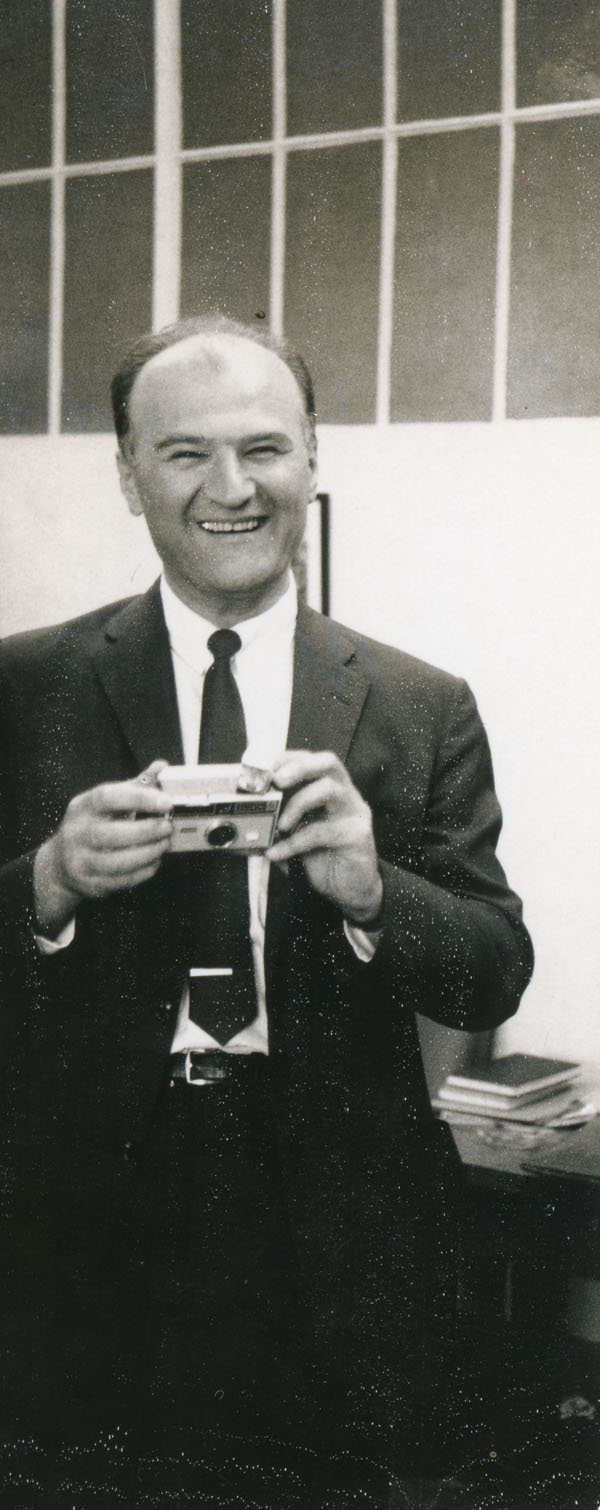
Paul Halmos photographed Revaz Gamkrelidze (at right) in Ann Arbor, Michigan, on May 31, 1967. Halmos was a faculty member at the University of Michigan in Ann Arbor from 1961 to 1968. Born in Kutaisi, Georgia, Gamkrelidze studied for one year (1945-46) at Tbilisi State University in Georgia before moving to Moscow State University, where he studied from 1946 to 1953. In 1953, he became a researcher at the Steklov Institute of Mathematics of the Russian Academy of Sciences, becoming Senior Researcher in 1955, Doctor of Physico-Mathematical Sciences in 1961, Professor in 1966, and Head of the Department of Differential Equations and Theory of Control in 1988. Gamkrelidze was founding editor of the Encyclopaedia of Mathematical Sciences, published by Springer-Verlag since 1988. (Sources: Georgian National Academy of Sciences: Academician Revaz Gamkrelidze, Springer-Verlag)
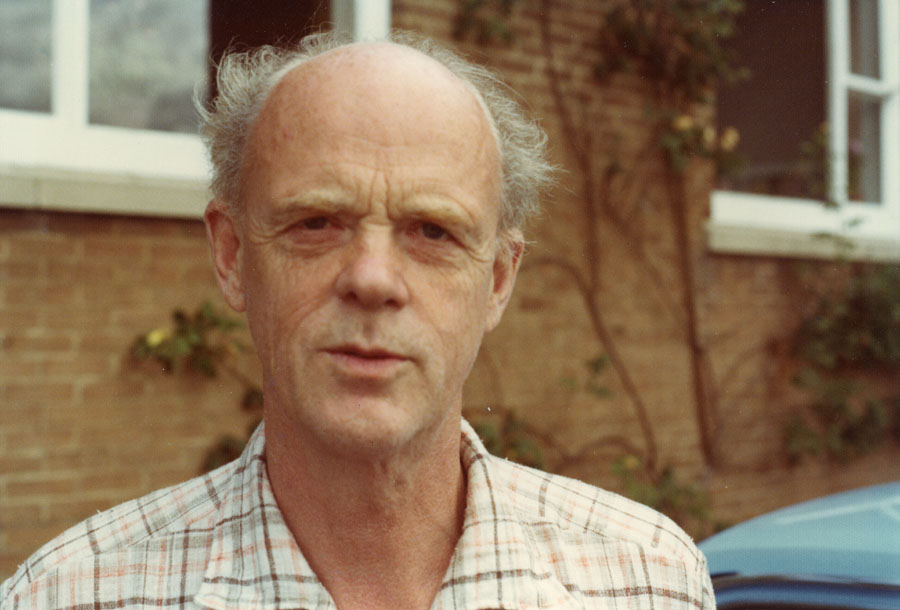
Lars Gårding was photographed by Halmos in England in 1976. Gårding earned his Ph.D. at Lund University in Sweden under Marcel Riesz. After visiting Princeton University in New Jersey in 1946-47, he has spent his career at Lund University (with eight years at the Institute for Advanced Study in Princeton), where he has carried out research in partial differential operators and is now Professor Emeritus. In 1952, when Marcel Riesz retired from Lund and Gårding was a new faculty member there, Gårding took over supervision of the Ph.D. thesis of Lars Hörmander (pictured on page 24 of this collection), who would win the Fields Medal in 1962 for his work in linear partial differential operators. Gårding also is interested in the history of mathematics, having written the books Some Points of Analysis and Their History (AMS, 1997) and Mathematics and Mathematicians: Mathematics in Sweden Before 1950 (AMS, 1998). (Sources: Mathematics Genealogy Project; Institute for Advanced Study; AMS Bookstore; Perspectives in PDE, Harmonic Analysis & Applications; Mitrea & Mitrea, eds.: Garding article; Fields Medallists' Lectures, 2nd ed., Atiyah & Iagolnitzer, eds.: Hörmander autobiography)
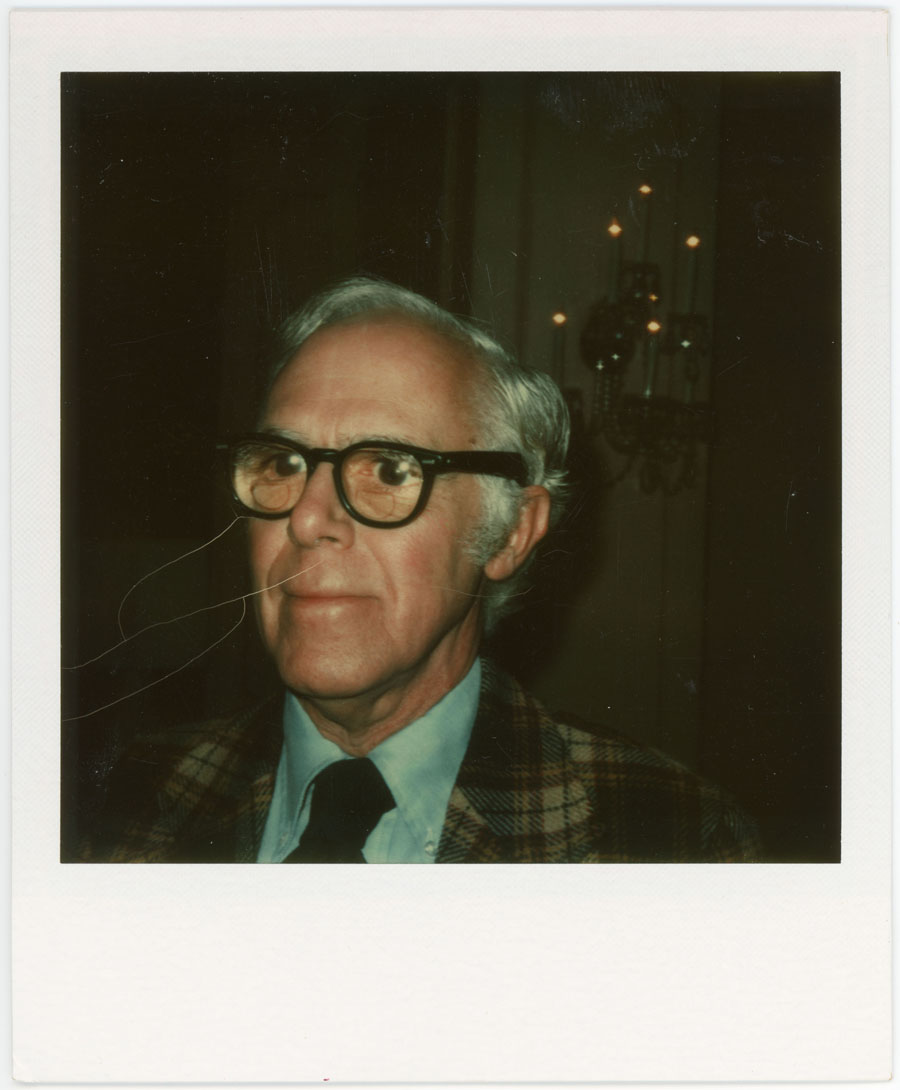
Halmos photographed Martin Gardner (1914-2010) in New York City on Oct. 26, 1974. The magazine Scientific American paid tribute to Gardner, the "Mathematical Gamester," as follows: "For 25 years, he wrote Scientific American's Mathematical Games column, educating and entertaining minds and launching the careers of generations of mathematicians." The magazine also credits Gardner with "single-handedly populariz[ing] recreational mathematics in the U.S." Gardner wrote his first article for Scientific American in 1956 and was immediately invited to write the magazine's "Mathematics Games" column, which he did from 1957 to 1981. The 15 books containing all of his columns are among the over 100 books and pamphlets he published during his career. (Sources: Scientific American, MacTutor Archive)
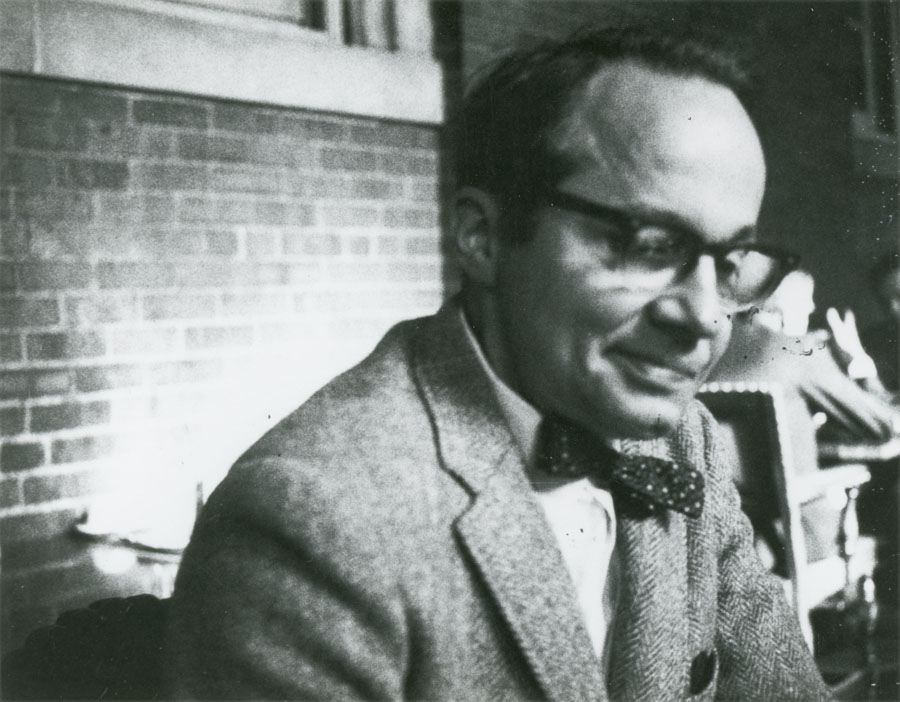
Halmos photographed his former University of Michigan colleague, the complex analyst and geometer Frederick Gehring, in 1974. Born and raised in Ann Arbor, Michigan, Gehring earned his Ph.D. at Cambridge in 1952, taught at Harvard for three years, and, since 1955, has been a mathematics professor at the University of Michigan in Ann Arbor, where he has specialized in quasiconformal mappings and advised at least 29 Ph.D. students. He was appointed T. H. Hildebrandt Distinguished University Professor in 1987 and, in 1995, he added Emeritus to his title. (T. H. Hildebrandt is photographed on page 23 of this collection.) In 1996, Michigan established the Gehring Collegiate Professorship in his honor, and appointed complex analyst John Erik Fornaess as its first holder. During 2001-02, UM held the Gehring Special Year in Complex Analysis. Gehring and Halmos were colleagues at UM from 1961 to 1968, when Halmos was a faculty member there. Another photograph of Gehring appears on page 29 of this collection. (Sources: Mathematics Genealogy Project, UM Memoir, UM: Fornaess, ContinuUM)
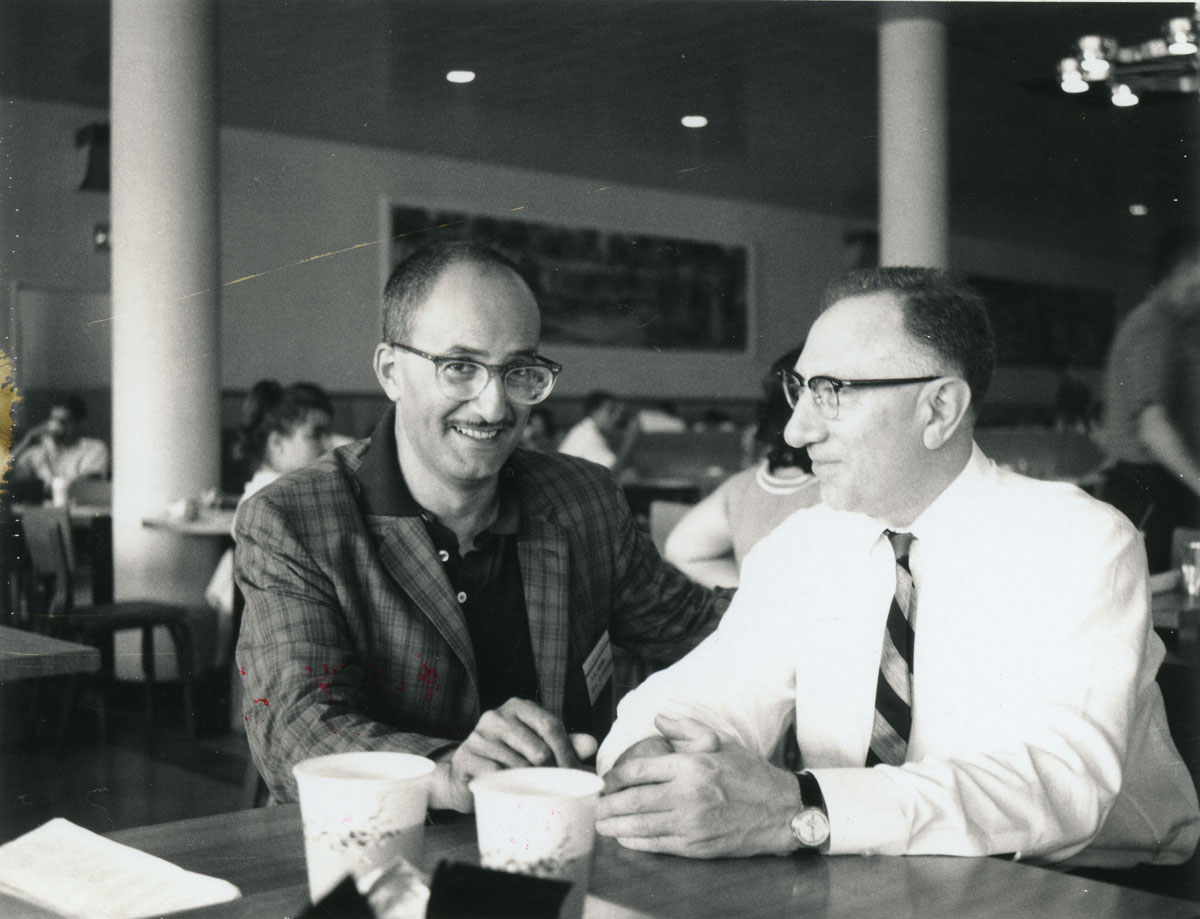
Paul Halmos and Abraham Gelbart (1911-1994) at the AMS-MAA Joint Summer Meetings in Amherst, Mass., on August 25, 1964. Abe Gelbart earned his Ph.D. in 1940 from the Massachusetts Institute of Technology (M.I.T.) under advisor Norbert Wiener. He taught at Syracuse University in New York from 1943 to 1958. Paul Halmos was a faculty member at Syracuse from 1942 to 1946, and it is likely that he and Gelbart first met there. In 1958, Gelbart became Director of Mathematics at Yeshiva University in New York City, where he pursued his interests in complex analysis and partial differential equations. In 1982, after his retirement from Yeshiva, he became a trustee of Bar-Ilan University in Ramat-Gan, Israel. Bar-Ilan University now has an Abraham Gelbart Research Institute in Mathematical Sciences, founded in 1987 to focus on analysis. (BIU has one other mathematical research institute, the Emmy Noether Mathematics Institute in Algebra, Geometry, Function Theory and Summability.) Gelbart himself received an honorary doctorate from BIU in 1985. (Sources: AMS Notices 42:1 (Jan. 1995), Bar-Ilan University, BIU: Gelbart Institute)
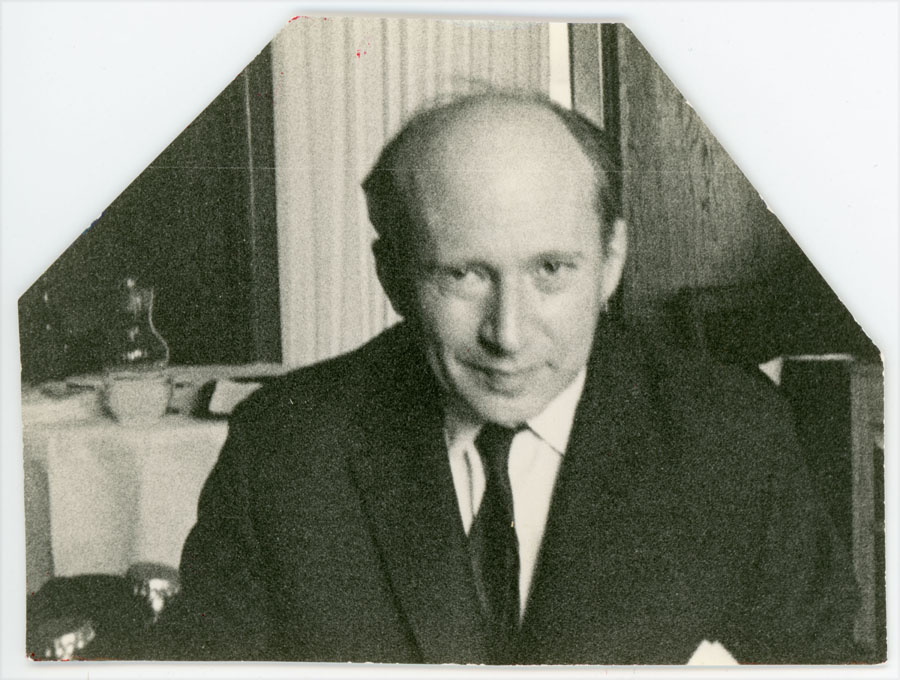
Halmos photographed Israil Gelfand (1913-2009) in Moscow, Russia, in May of 1965. Halmos visited the USSR for one month during April and May of 1965 as part of an exchange program between the American and Soviet scientific academies that sent 20 scientists from each country to the other. Born in Odessa, Ukraine, Gelfand earned his Ph.D. in functional analysis in 1935 under A. N. Kolmogorov at Moscow State University. In 1941, after six years at the USSR Academy of Sciences, he moved to Moscow State University, where he worked on representation theory of non-compact groups, differential equations, computational mathematics, integral geometry, and, with his colleague Sergei Fomin, mathematical biology. (Fomin and Gelfand are pictured together, also in 1965, on page 15 of this collection.) Gelfand moved to Rutgers University in New Jersey in 1990. (Sources: Archives of American Mathematics, MacTutor Archive)
For an introduction to this article and to the Paul R. Halmos Photograph Collection, please see page 1. Watch for a new page featuring six new photographs each week during 2012.
Regarding sources for this page: Information for which a source is not given either appeared on the reverse side of the photograph or was obtained from various sources during 2011-12 by archivist Carol Mead of the Archives of American Mathematics, Dolph Briscoe Center for American History, University of Texas, Austin.
Janet Beery (University of Redlands) and Carol Mead (Archives of American Mathematics, University of Texas, Austin), "Who's That Mathematician? Paul R. Halmos Collection - Page 16," Convergence (January 2012), DOI:10.4169/loci003801




